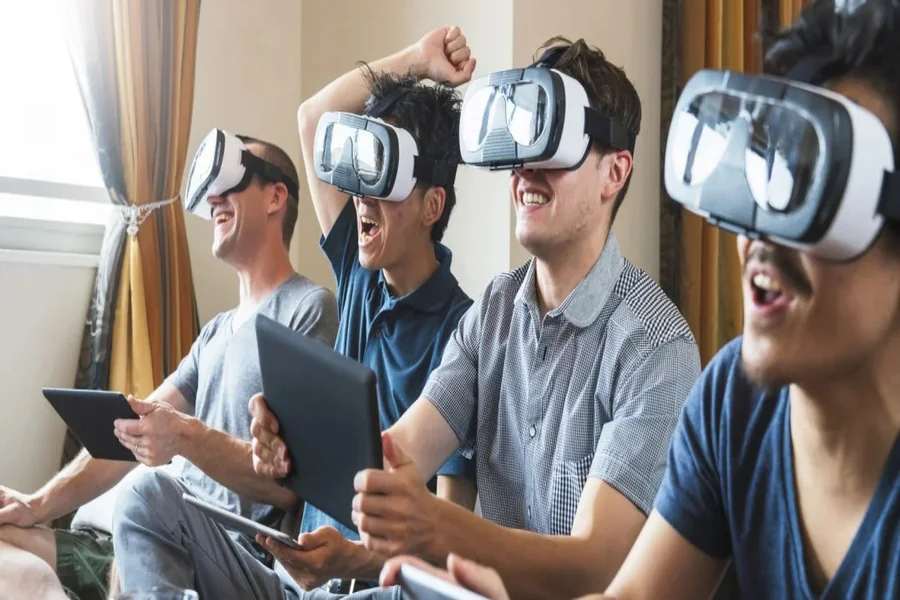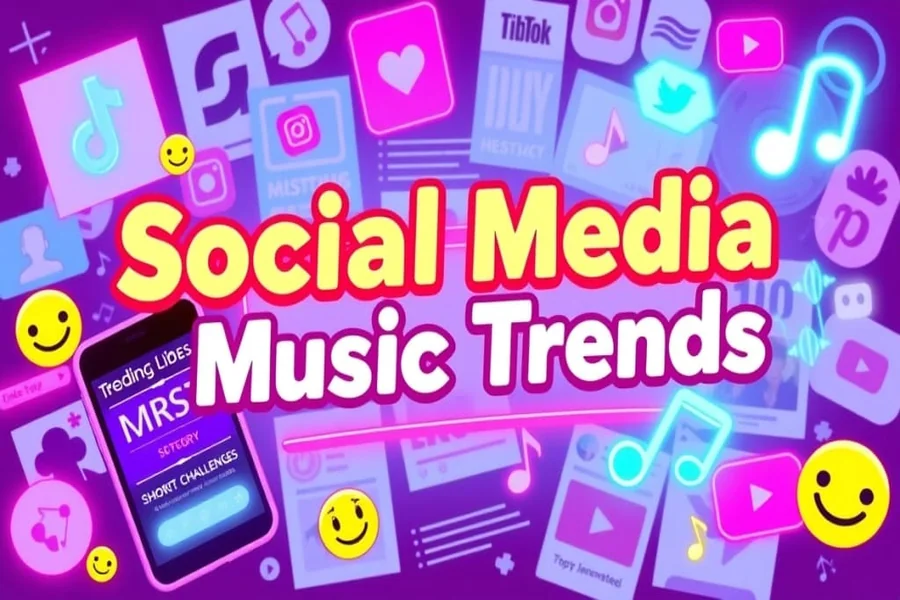Virtual Reality (VR) has made significant strides in recent years, and its influence on the entertainment industry is nothing short of transformative. What was once a niche technology, reserved for gaming enthusiasts or futuristic science fiction, has evolved into a mainstream tool shaping everything from video games and movies to live concerts and theme parks. VR has enabled the entertainment sector to break traditional boundaries, offering immersive experiences that were previously unimaginable.
In this article, we explore how Virtual Reality is revolutionizing the entertainment industry, focusing on its applications in gaming, film, live events, and theme parks, and its potential future impact.
Virtual Reality in Gaming: A New Era of Interactive Play
When most people think of VR, gaming is often the first industry that comes to mind. VR gaming is no longer just about playing games on a screen; it’s about stepping inside the game, offering players a fully immersive experience that engages their senses in ways that traditional gaming cannot.
Enhanced Immersion and Realism
VR gaming allows players to physically interact with their environment, whether it’s slaying dragons, solving puzzles, or exploring alien worlds. With the help of VR headsets like Oculus Rift, PlayStation VR, and HTC Vive, players can now see, hear, and even feel the game world in three dimensions, offering a level of immersion that was once confined to imagination. These advancements have taken gaming to new heights, making it more realistic and emotionally engaging.
The thrill of being inside a game not only boosts excitement but also creates a sense of agency and presence. VR allows gamers to physically move within a virtual space, track their movements, and interact with the environment in real time. This dynamic interaction enhances the gaming experience, making it more engaging, and players feel like they are part of the action rather than just passive observers.
Expanding Game Genres
Traditionally, gaming experiences were limited to a flat screen or a console. VR technology, however, has expanded the range of genres available, with simulations, action, strategy, and even fitness games now offering immersive experiences. For instance, games like Beat Saber and Superhot VR use physical movements to control gameplay, making the gaming experience more interactive and physically engaging.
Moreover, VR is also revolutionizing the way multiplayer games are experienced. Multiplayer VR games allow players from around the world to meet in a virtual space and interact in real-time, overcoming the limitations of traditional online play. VR platforms like Rec Room and VRChat offer expansive virtual worlds where players can socialize, create, and even attend virtual events together, bringing the community aspect of gaming to a whole new level.
Virtual Reality in Film: A Cinematic Revolution
The film industry has always pushed the boundaries of technology to create more immersive experiences for viewers. From the early days of cinema to the rise of 3D movies, filmmakers have continually sought ways to enhance storytelling. Virtual Reality, however, is taking immersion to unprecedented levels, enabling viewers to step inside the story and engage with characters, settings, and plots in entirely new ways.
360-Degree Storytelling
Unlike traditional films, where viewers are passive observers, VR films provide a fully interactive experience. VR movies, or 360-degree films, allow the audience to look in any direction, creating a sense of presence within the film itself. This form of storytelling allows viewers to explore the world of the film from their own perspective, offering a more personalized experience.
One notable example of VR film innovation is The Lion King VR Experience, which allows users to immerse themselves in the world of the iconic Disney film. By wearing VR headsets, viewers can explore the African savannah and interact with characters like Simba and Mufasa. This type of storytelling opens new possibilities for filmmakers, as it brings a deeper level of immersion and interaction to the traditional cinema experience.
Interactive Movies: Blurring the Line Between Gaming and Film
In addition to 360-degree storytelling, VR is also introducing a new form of interactive movies. These films allow viewers to make decisions that influence the storyline, effectively blending elements of gaming with cinematic experiences. Netflix’s Black Mirror: Bandersnatch is a prime example of this, allowing viewers to choose how the story unfolds, leading to multiple possible endings.
In the future, we can expect to see more movies that incorporate VR’s interactive elements, offering audiences greater control over the narrative. This could lead to entirely new genres of cinema, where the line between viewer and participant becomes even more blurred.
Virtual Reality in Live Entertainment: A New Dimension for Concerts and Events
VR technology has expanded its reach beyond traditional gaming and film to include live entertainment. From virtual concerts to sports events, VR is creating new avenues for audiences to experience live performances without leaving their homes.
Virtual Concerts: Live Music Without Boundaries
Virtual concerts are one of the most exciting applications of VR in the live entertainment industry. Artists like Travis Scott and Marshmello have already held virtual concerts within popular video games such as Fortnite, drawing millions of fans to experience the event in real-time. These concerts combine the world of gaming with live music, offering an experience that blends music, gaming, and social interaction.
For example, Travis Scott’s Astronomical concert within Fortnite in 2020 attracted over 27 million players. The immersive experience allowed fans to be part of a concert spectacle that combined animated visuals, 3D environments, and live performances in a way that traditional concerts cannot replicate.
In addition to virtual performances within video games, VR concerts also provide fans with the ability to attend live events through a virtual space. With VR headsets, fans can enter a virtual concert hall and watch live performances from the comfort of their homes, experiencing the concert as if they were physically there. This has become especially important during the COVID-19 pandemic, when live events were canceled or postponed worldwide.
Sports and Events: Experiencing the Action Up Close
VR is also changing the way we experience sports and live events. By using VR headsets, fans can watch sporting events from different angles, as if they were sitting courtside or in the front row. This enhanced experience makes it possible to feel the excitement of a live game without being physically present.
For example, NBA League Pass offers VR broadcasts of select games, allowing fans to watch live games from the comfort of their home, with the option to choose different viewing angles and positions on the court. This level of immersion is a game-changer for sports enthusiasts, offering a new way to experience their favorite teams and players in action.
Virtual Reality in Theme Parks: A Thrilling New Frontier
Theme parks have always been a place for thrilling experiences, but with the advent of VR, these attractions are being taken to new heights. Virtual reality is being used in theme parks to create more immersive and interactive rides that blend the physical world with the digital.
VR Roller Coasters: The Ultimate Thrill
Several theme parks around the world have incorporated VR technology into their roller coasters. For example, at Six Flags Magic Mountain, the Full Throttle roller coaster now has a VR option, where riders wear headsets to experience a high-speed thrill ride in a virtual world. As the roller coaster twists and turns, the riders are taken on a virtual journey through outer space or other fantastical landscapes, combining physical movement with immersive virtual visuals.
This integration of VR into theme park rides creates a whole new level of excitement, as riders not only experience the adrenaline rush of the coaster but also the thrill of being inside an entirely different world.
The Future of VR in Entertainment: What’s Next?
The future of VR in entertainment is limitless. As the technology continues to improve, we can expect even more immersive and interactive experiences. Haptic feedback devices, which provide physical sensations to users, are already in development and will add another layer to the VR experience, allowing users to feel textures, temperature, and motion within the virtual world.
The integration of AI and machine learning into VR could also allow for more dynamic and personalized experiences. Virtual environments could adapt in real-time to user decisions, making the experience even more interactive and unique. With advancements in VR, the line between reality and fiction will continue to blur, opening up new possibilities for entertainment and storytelling.
Conclusion: Virtual Reality’s Unstoppable Impact
Virtual Reality has already made a profound impact on the entertainment industry, offering new ways to interact with and experience content. From revolutionizing gaming to transforming film, live events, and theme park attractions, VR has redefined the concept of entertainment. As the technology continues to evolve, we can expect VR to play an even larger role in shaping the future of entertainment, offering experiences that are immersive, interactive, and unprecedented.
With VR, the world of entertainment has no limits—creating endless possibilities for both creators and consumers alike. It is safe to say that the virtual reality revolution is just getting started.




